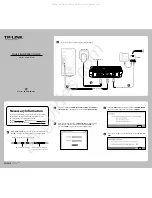
User’s Manual
BOSCH
- 8/77 -
Revision 1.6
TTCAN
11.11.02
manual_about.fm
2. Functional Description
2.1 Functional Overview
The TTCAN is a CAN IP module that can be integrated as stand-alone device or as part of an
ASIC. It is described in VHDL on RTL level, prepared for synthesis. It consists of the
components (see figure 1) CAN_Core, Message RAM, Message Handler, Control Registers,
Module Interface, and, for the time triggered function, Trigger Memory and Frame
Synchronisation Entity.
The TTCAN performs CAN protocol communication according to ISO 11898-1 (identical to
Bosch CAN protocol specification 2.0 A, B) and according to ISO 11898-4 : “Time triggered
communication on CAN”. The bit rate can be programmed to values up to 1MBit/s depending
on the used technology. Additional transceiver hardware is required for the connection to the
physical layer (the CAN bus line).
TTCAN provides all features of time triggered communication specified in ISO 11898-4,
including event synchronised time triggered communication, global system time, and clock
drift compensation. Optionally, it may be restricted to the functions of ISO 11898-1, with the
same features as the Bosch C_CAN IP module.
For communication on a CAN network, individual Message Objects are configured. The
Message Objects and Identifier Masks are stored in the Message RAM. The time triggers
defining the transmission schedule are stored in the Trigger RAM.
All functions concerning the handling of messages are implemented in the Message Handler.
Those functions are acceptance filtering, transfer of messages between the CAN_Core and
the Message RAM, and the handling of transmission requests as well as the generation of the
module interrupt.
All functions concerning the time schedule and the global system time are implemented in the
Frame Synchronisation Entity FSE.
The register set of the TTCAN can be accessed directly by an external CPU via the module
interface. These registers are used to control/configure the CAN_Core and the Message
Handler and to access the single-ported Message RAM.
The module interfaces delivered with the TTCAN IP module can easily be replaced by a
customized module interface adapted to the needs of the user.
The TTCAN implements the following features:
•
Supports CAN protocol version 2.0 part A, B and TTCAN (ISO 11898-4)
•
Bit rates up to 1 MBit/s
•
32 Message Objects, each Message Object has its own Identifier Mask
•
Programmable FIFO mode for Message Objects
•
TTCAN protocol level 1 and level 2 completely in hardware
•
Event synchronised time triggered communication implemented
•
Programmable loop-back mode for self-test operation
•
two 16-bit module interfaces to the AMBA APB bus from ARM
•
16-bit non-multiplex TI TMS470 compatible module interface
•
8-bit non-multiplex Motorola HC08 compatible module interface
manual_funct_descr.fm









































